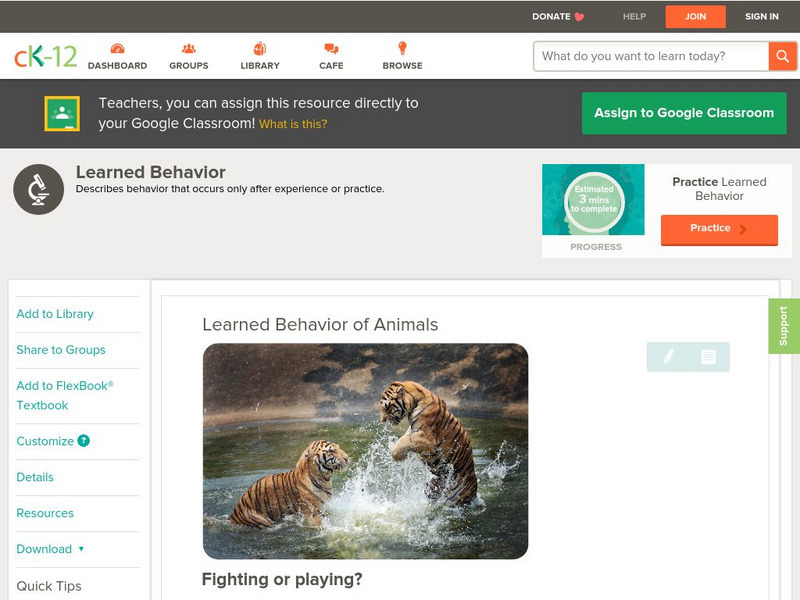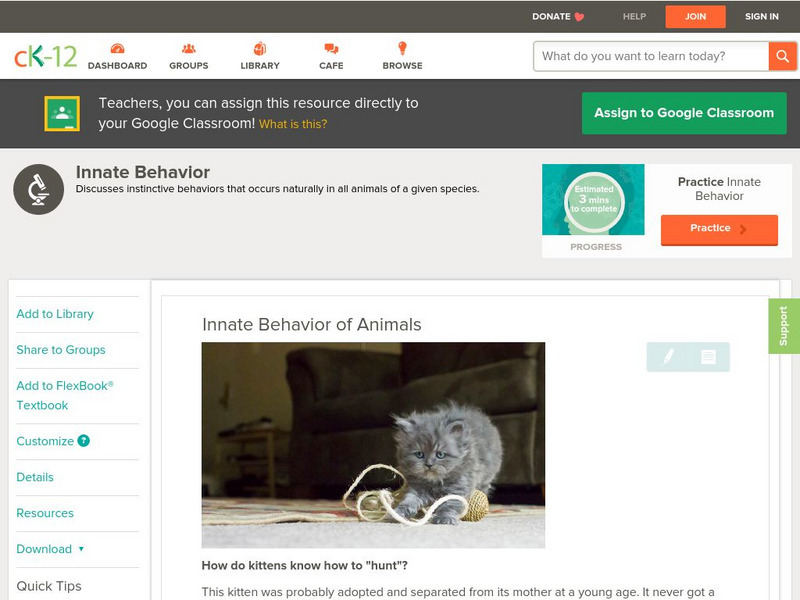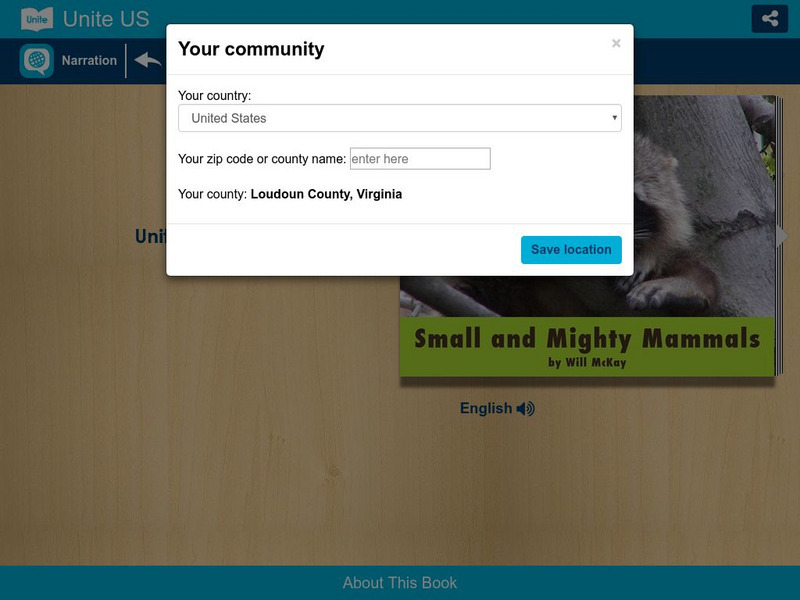Hi, what do you want to do?
Curated OER
Time, Tide, and Quahogs
Young scholars read tide tables for Waquoit Bay as the simulate determining the best time to go clam digging for a Wampanoag clambake. They graph the tide tables while realizing that the tides a Waquoit Bay are one hour later than those...
Curated OER
Make a Cast of a Tyrannosaurus rex Fossil
Second graders examine the formation of fossils and list the different types. They make cast model of a dinosaur fossil. They write about conditions that are necessary for fossils to form and create a model of a buried fossil.
Curated OER
Word Books
Students explore art and writing. They create a word book consisting of new words that they come across in their reading or words they hear from people. Students create a cover for their word books.
Curated OER
Shapes and Review of Locomotor Skills
Students engage in a series of loco-motor activities based on shapes. In this loco-motor lesson, students demonstrate physical skills through races, jumping, hopping, galloping in circles, squares, rectangles and triangles.
Curated OER
On the Trail with Lewis and Clark
Eighth graders use the Internet to conduct research on the Lewis and Clark journals and work cooperatively in planning and delivering a presentation.
Curated OER
Turtle Sightings
Third graders research turtles and the ways they have adapted to their marine environment. They work in groups and publish their findings using SiteMaker a web-authoring tool.
Curated OER
Presto Change-o: Caterpillars to Butterflies
Young scholars use the Internet to explore the four stages of a butterfly's life cycle. They make a model of a butterfly using macaroni, sticks and leaves.
Curated OER
Ancient History
Students investigate the concept of water usage and conservation. The differences between modern and ancient practices are considered. They conduct research into the economic and social characteristics of ancient civilizations like Egypt...
Curated OER
Help! I'm Under Too Much Pressure!
Students play with a ping pong ball sized piece of modeling clay observing what happens to the clay as they play with it and write their observations in their notebooks. They share the results of their observations introducing the term...
Curated OER
It's Alive! Or is it?
Learners differentiate the characteristics of living and nonliving things. For this life science lesson, students compare and contrast robots and living things. Given an object, they decide whether it's is living or not and defend...
CK-12 Foundation
Ck 12: Fourth Grade Science: Life Science: Learned Behavior of Animals
[Free Registration/Login may be required to access all resource tools.] Introduces learned behaviors and the different methods of learning.
Trinity University
Trinity University: Inherited Traits Versus Learned Behaviors [4Th Grade]
In this extremely detailed unit, students will learn the about innate and learned characteristics in animals and humans through a series of teacher and student-led discussions, readings, reflections, learning activities, and...
CK-12 Foundation
Ck 12: Life Science: Learned Behavior of Animals
[Free Registration/Login may be required to access all resource tools.] Just about all human behaviors are learned. Learned behavior is behavior that occurs only after experience or practice. Learned behavior has an advantage over innate...
CK-12 Foundation
Ck 12: Life Science: 8.3 Learned Behavior
Understand different types of learned behavior among animals and humans.
CK-12 Foundation
Ck 12: Biology: Learned Behavior of Animals
[Free Registration/Login may be required to access all resource tools.] Describes types of behavior that animals can learn.
McGraw Hill
Glencoe Biology: Basic Behaviors: Self Check Quiz
Try these five multiple-choice questions about the difference between innate and learned behaviors in animals. The quiz is self-checking, and provides hints to the student if needed.
CK-12 Foundation
Ck 12: Life Science: Innate Behavior of Animals
[Free Registration/Login may be required to access all resource tools.] Many animal behaviors are ways that animals act naturally. They are not learned behaviors. Cats are natural-born hunters. They don't need to learn how to hunt....
CK-12 Foundation
Ck 12: Life Science: Animal Behaviors
[Free Registration/Login may be required to access all resource tools.] Barking, purring, and playing are just some of the ways in which dogs and cats behave. These are examples of animal behaviors. Animal behavior is any way that...
PBS
Pbs Learning Media: How Animals Care for Their Young
In this interactive lesson, students learn that animals take care of their young in many of the same ways the adults in their lives take care of them.
PBS
Pbs Learning Media: How Animals Care for Their Young
In this interactive lesson, students learn that animals take care of their young in many of the same ways the adults in their lives take care of them. Students watch videos from NATURE and engage in a variety of activities to check...
Unite for Literacy
Unite for Literacy: Animals: Small and Mighty Mammals
Learn about some of the special skills some small mammals have. Includes audio narration in Turkish and English, with text in English.
CK-12 Foundation
Ck 12: Biology: Animals: Behavior Study Guide
This comprehensive study guide covers the necessary vocabulary and concepts for a unit on animal behavior.
NC State University
Nc State University: General Entomology, Elements of Behavior
Behavior is what animals do. It can be defined more precisely as an internally directed system of adaptive activities that facilitate survival and reproduction. Ethology is the scientific study of animal behavior -- particularly when...
PBS
Pbs Learning Media: Wild Kratts: All About Lizards Lesson Plan
Students explore the diversity of lizards in terms of characteristics, behavior, and habitat. Activities feature five species of lizards and their special body structures needed for survival.





















